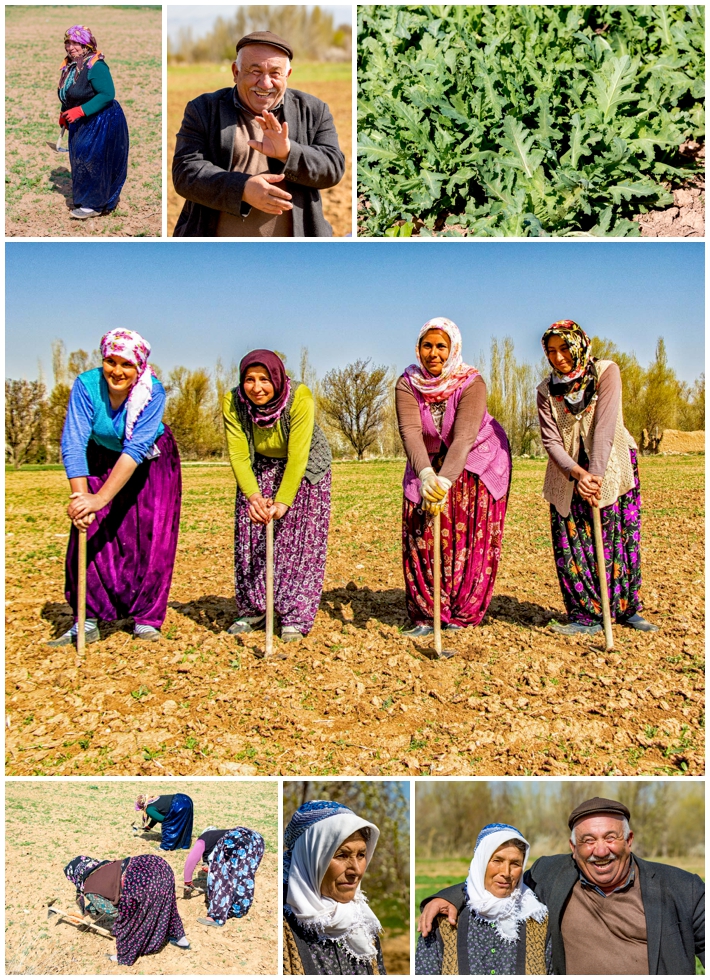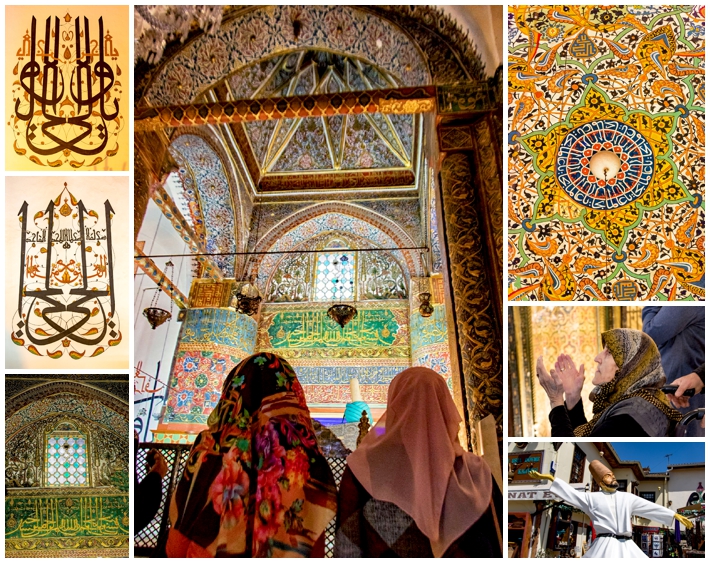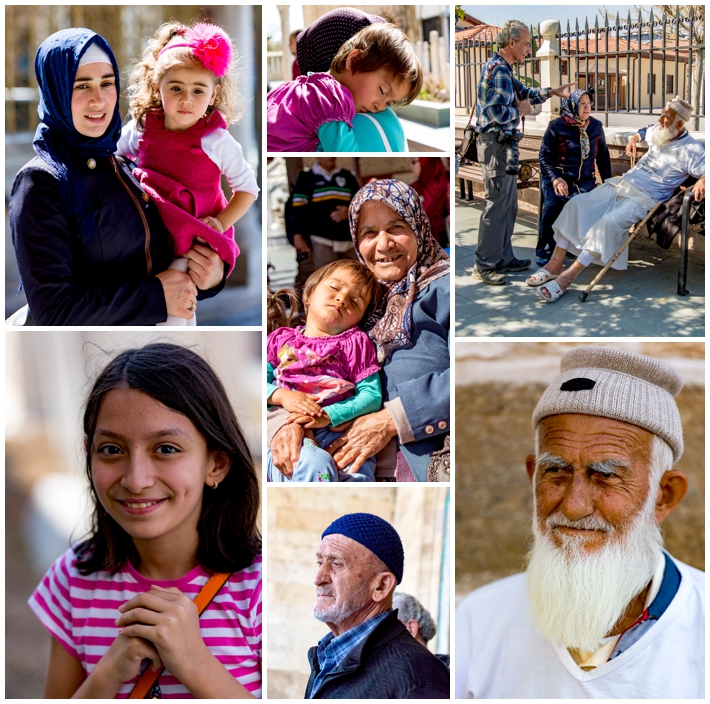
Enroute to Cappadocia today, we saw some women working in the fields. Mehmet signaled the driver to pull over, and after a minute of discussion with the workers, Mehmet signaled for us to join him. He had gotten permission for us to take their photographs. They were hand weeding what appeared to be barren soil, but we were told it was actually a poppy field, grown under government license for producing opium.
A few minutes later an older gentleman walked over, and after a short hesitation, wanted to also pose for our cameras (center top). He then insisted we walk with him over to a neighboring field, where we could see some leaves sprouting up (upper right image). He introduced us to his wife (lower right), then pulled up one plant, and gave each of us some leaves to chew. A little bitter, but nobody started wearing lampshades. Turns out the leaf has no narcotic effect, and we got a short lecture on how opium is harvested (as translated by Mehmet).
The older gentleman was not accustomed to displaying public affection, so he laughed when he put his arms around his wife.

When we got back on the bus, we continued to Konya, where we visited the Mausoleum of Mevlana. This was the birthplace of the famous Whirling Dervish sect, outlawed in 1923 by the first Turkish president (he outlawed any Muslims sects that were “man made,” and felt that only the Sunni and Shiah were valid religions). The dervish statue outside the mausoleum shows a dancer, one hand uplifted to Allah, and the other down towards the power of the earth.

After leaving the mausoleum, we wandered the grounds. Again, the people were welcoming to us. One 83 year-old man had a flowing white beard, sitting in the shade with his daughter (right upper image). Mehmet approached him, and the man agreed to move to better lighting, in the shade against the temple wall (lower right image).